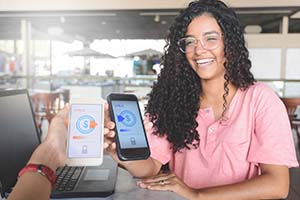Here’s how to get back on track — and avoid future overdrafts
Overdraft charges on your checking account can be embarrassing and expensive. If you attempt to withdraw or spend more than you have in your account, the fees will vary in range. If you do find yourself overdrawn, don’t panic. Just follow these steps to get back on track, and check off the boxes below as you complete the process.
Do these things immediately to prevent future overdrafts
- Call your bank: If you don’t have a history of overdrafts, call your bank to ask if they’d be willing to waive or reduce the overdraft fee.
- Deposit funds into your account: Get your balance back in good standing to avoid a pileup of overdraft fees from subsequent spending or automatic bill payments.
- Review automatic bill payments: Automatic bill payments are a huge convenience, but if you’re having a hard time maintaining a minimum balance in your account, they could put you at risk of overdrawing again. Reverting to manual payments might give you more control.
- Set up a low-balance alert: Banks often offer a service that will send you an email or text if your checking account balance drops below a certain predetermined amount.
Do these things soon to prevent future overdrafts.
- Set up overdraft protection: Many banks allow you to tie another account to your checking account as a backup, usually a savings account. (Some banks allow you to do this with a credit account as well.) At U.S. Bank this is called overdraft protection, but it may also be referred to as transfer protection or overdraft transfers. With this service, if your checking account balance drops below zero, funds are automatically transferred from a linked account to cover the difference. Depending on your bank, this service may come with a fee, though it is usually considerably less than an overdraft fee. For instance, U.S. Bank offers free overdraft protection if your backup account is a U.S. Bank checking or savings account but charges a small transfer fee if your linked account is a U.S. Bank credit account (such as a credit card, home equity line of credit or similar).
- Consider overdraft coverage: Many banks offer a form of overdraft coverage where the bank uses its money to cover you if you overdraft (unlike overdraft protection, where the bank transfers your own money to cover the overdraft). This can prevent a check from being rejected or overdrawing your account — both of which usually carry fees — as well as declined sales. However, overdraft coverage usually comes with its own (sometimes hefty) fees. For this reason, customers may be required to make a choice to “opt in” or say “yes” to overdraft coverage on everyday debit card purchases and ATM withdrawals. Keep in mind that banks can provide overdraft coverage on other types of transactions (for example, checks, automatic transfers, or recurring debit card payments) at their discretion, regardless of your choice.
Overdrafts happen. Learn more about how the convenience of U.S. Bank overdraft protection can help keep you on track.





